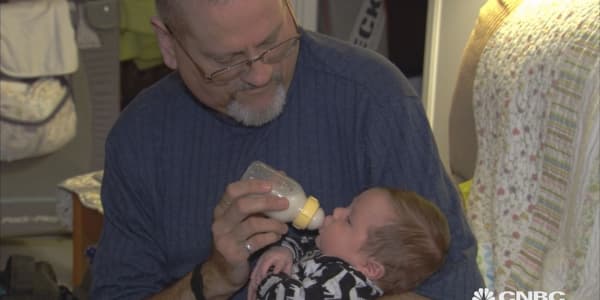In early July the Food and Drug Administration approved the first new drug for sickle cell patients in nearly 20 years. It was a watershed moment for people who suffer from the rare blood disorder that can cause debilitating pain. And for one physician it was the end of a 25-year journey.
The drug, Endari, is made by Emmaus and has been approved for patients five years and older. It injects glutamine into red blood cells, reducing the likelihood they will clog and cause painful blockages in small blood vessels and, in some cases, organs.
Sickle cell disease primarily affects African Americans, Latinos and other minority groups. It's a lifelong disorder in which red blood cells, normally round, are crescent- (or sickle-) shaped, due to abnormal hemoglobin. That shape makes the cells less flexible, or more 'sticky,' which can impede blood flow. By injecting glutamine into the cells, Endari makes the cells less 'sticky.' It's not a permanent solution, but it does help reduce the pain.
"We knew this was not going to cure the disease, but improve the conditions [for patients]," says Yutaka Niihara, MD, CEO of Emmaus. "We're able to decrease the symptoms and make the circulation better."
Sickle cell affects about 100,000 people in the United States, a number that's dwarfed by people suffering from cancer, heart disease and other high-profile ailments. That number could actually be higher, but many patients are viewed as "drug seekers" by some members of the medical community, due to the severe pain they face. As a result, they may not be diagnosed with sickle cell.
More from Modern Medicine:
New hope for a vaccine to fight Gonorrhea
New tools to combat the organ transplant crisis
A.I.'s expanding role in medicine
Still, that official patient count made sickle cell an "orphan disease" in the eyes of most pharmaceutical companies, which ignored it for decades because of the perceived fear that development costs on any drugs would not be recouped.
A lifelong mission
Niihara first saw the disease in 1989, he says, when training in hemotology. He had planned to specialize in cancer, but after seeing sickle cell's impact on patients, he changed his focus to researching the disease.
He first approached the FDA with the research for what would become Endari in 2000 and was given a $1 million grant to begin a Phase 2 clinical study.
From there, he says, he planned to pass it on to an established pharmaceutical company to continue the research, but he couldn't find an interested company. As a result, he started Emmaus.
Now that Endari has received approval, he says, he intends to ensure it is an affordable drug so patients can relieve their suffering.
"Typically, the way pharmaceutical companies make money on a new medication is to charge enormous amounts of money for treatment," he says. "Treatment for an orphan [disease] can cost $200,000 to $300,000 per year. Some can be more. That's not our goal at all. We're going to try to keep our price of a fully dosed patient below $20K. We're sill finalizing pricing with our agency, but that's what I'm asking."
Emmaus, he says, has roughly an 85 percent margin on the product, so if it treats just 10
percent of the patients in the United States, it would result in more than $100 million in revenue.
"For a small biotech, that's big money," he says.
Should European approvals come, the market jumps to $2 billion, he says.
Future prospects
The approval of Endari has won praise from sickle cell advocacy groups, though they're encouraging federal regulators and drug makers to speed up the pace of treatment research for the disease.
"More effort and resources still need to be dedicated to nutritional supplementation studies aimed at establishing specific RDAs (recommended dietary allowances) for sickle cell patients, much like the specific RDAs developed for cystic fibrosis, pregnancy and growth within the general population," said Lanetta Bronté, president of the Foundation for Sickle Cell Disease Research.
Before the FDA's approval of Endari, sickle cell patients most commonly were treated with Hydroxyurea, a drug that's also used in chemotherapy. Endari, like any drug, has potential side effects. The FDA reported those could include constipation, nausea, headache, abdominal pain, cough, pain in the extremities, back pain and chest pain. But Niihara says, it doesn't have toxicity.
"As a physician who is always facing sickle cell patients, I appreciated [Hydroxyurea], but at the same time, I wanted to provide something that doesn't have toxicity — something where patients didn't have to worry about birth defects or ... worry they might develop cancer in the future."
Endari may have broken a long drought in sickle cell treatments, but it could have lots of company soon. As of last year, there were a dozen other drugs still in development for the disease.
— By Chris Morris, special to CNBC.com




